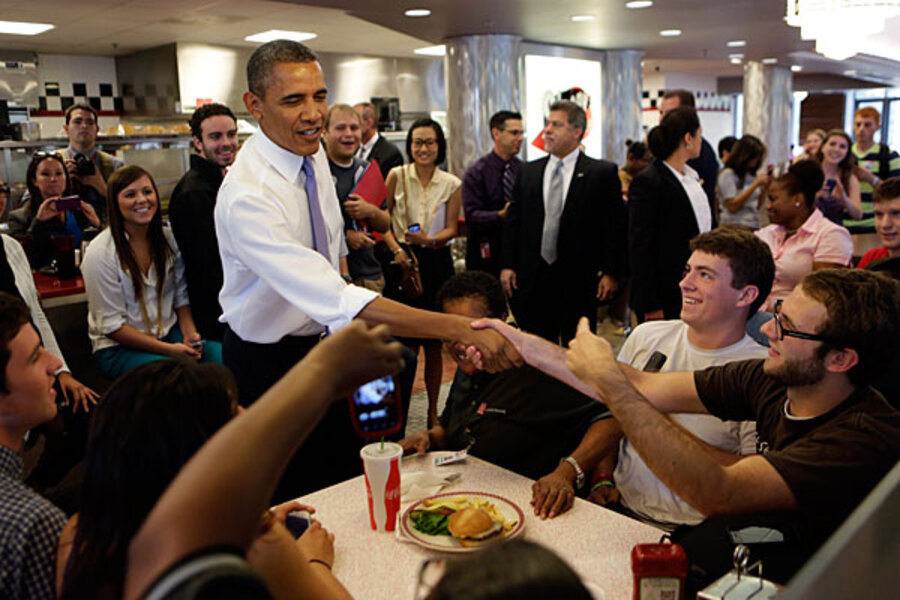The untold story of Obama's youth vote victory
Loading...
Much has been made of the importance of the youth vote in recent election cycles, but for decades, it’s largely been better-educated middle- and upper-income youths whose voices have been heard at the polls.
This November, 7 of 10 voters under age 30 had at least some college education. Their turnout rate was 66 percent, versus just 35 percent for young adults with no college experience, according to an analysis by CIRCLE, an independent research center that measures youth engagement in politics.
“The college, non-college distinction is the best measure of social class for young people,” says CIRCLE director Peter Levine. “The youth turnout has not surpassed about 50 percent since 1976 … and I think that ceiling has to do with social class – basically we’re just not engaging working class and poor young Americans in politics today, and that’s bad for democracy.”
Obama won 60 percent of both these segments of the youth vote.
But those with no college experience were much less likely to be contacted by Obama’s campaign – just 5.8 percent were, compared with 11.5 percent of those with some college education, according to a CIRCLE poll in October.
President Obama’s response to hurricane Sandy turned out to be the most important factor in the vote for 27 percent of youths who had not attended college, compared with just 10 percent of those who had.
This may be because the less educated “have a lower likelihood of following the campaign and the news, and in general are more alienated from the whole political system, so … a late event might have had more impact,” Mr. Levine speculates. “They also might have been more sympathetic to the hurricane victims, because we’re talking about the working class and poor, and they may have felt more vulnerable.”
Less-educated potential voters are harder for campaigns to find because they are not concentrated on college campuses and are less likely to show up on lists of previous voters. But both parties could benefit from reaching out to them more, Levine says.
Mitt Romney polled well among the non-college group. Forty percent of them believe the US economic system is fair to most Americans, for instance, compared with 32 percent of those with college experience. But the Romney supporters turned up at a lower rate at the polls.
The non-college group is more racially diverse – only 49 percent white, compared with 61 percent of those who have attended college.
The less educated group also has a higher percentage of evangelical Christians, people who are married and have children, and gays, lesbians, and bisexuals.





